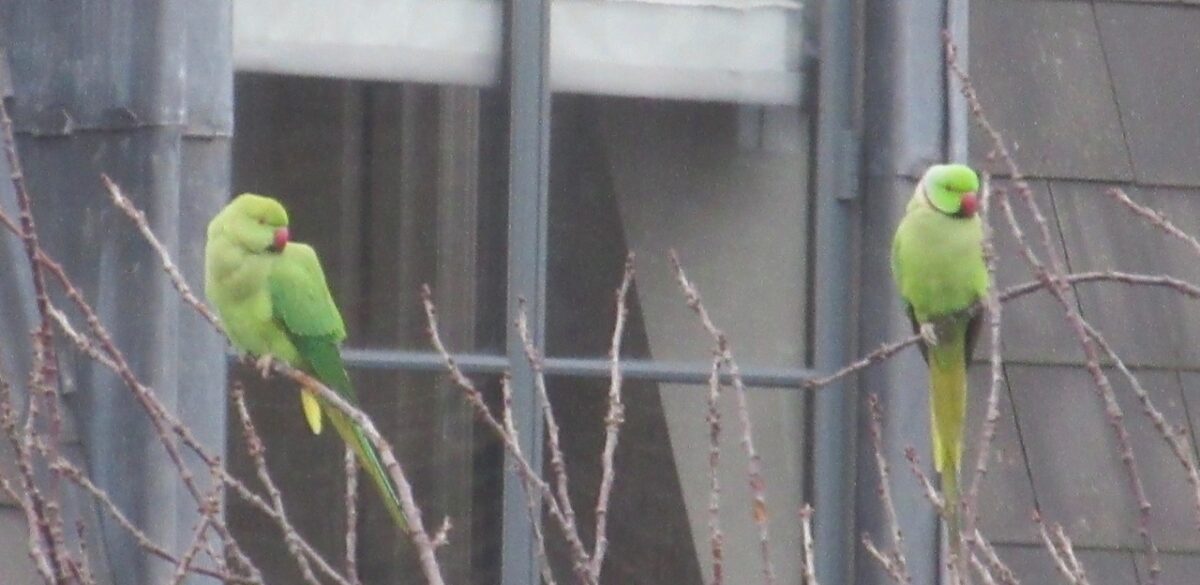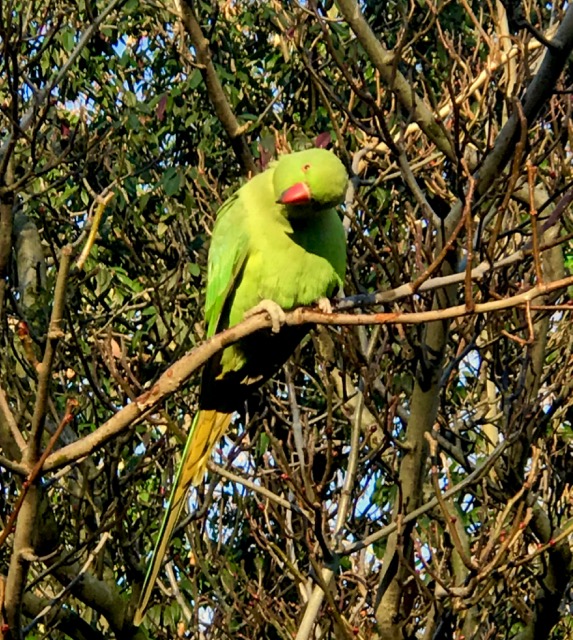
Perhaps 15 years ago, I was sat by the river in East Molesey, just past Hampton Court. Across the water the trees on the opposite bank were full of bright green parrots, the first time I had seen these now ubiquitous London birds.
Two or three years later they started appearing in Richmond Park; less than ten years ago the first colonists put in an appearance on Tooting and Clapham Commons. They now cover the city, west to east, south to north, their characteristic squawk being heard in all of London’s green spaces, as literal flocks of them cross the skies. It’s estimated that there are now anything up to 30,000 of them, with the population growing rapidly.
They are ring-necked (or rose-ringed) parakeets (Psittacula krameri) an Indian species from the foothills of the Himalayas. (Intriguingly, this BBC report from 2004 lists various other types, including orange-winged and blue-crowned parakeets, that had been spotted in the capital. Where are they now?) The birds are ‘hole nesters’, often taking over old woodpecker holes, or larger nest boxes. They start nesting early, which gives them a competitive advantage. Their impact of native species – in terms of competition for food and nesting sites – isn’t yet fully understood, but it seems likely that their success is at the cost of other birds.
There are numerous theories of how they came to be resident: descendants of birds used during the filming of the Bogart/Hepburn film The African Queen in Isleworth in 1951; from two (just two!) parrots released in Carnaby Street by Jimi Hendrix; escapees from a container at Heathrow. I thought (and have relayed as fact) that the originals came from an aviary breached during the Great Storm of 1987, but it seems that breeding colonies were established in Kent as early as 1969, with the population taking off from the 1990s. (Although how the birds moved from Kent to SW London without colonising the spaces inbetween implies multiple sources of introduction.) Smaller colonies, from released or escaped pet birds, have been recorded since Victorian times, but earlier ones all died out.
Go to Kensington Gardens, or St James’s Park and the birds, like that other ubiquitous immigrant the grey squirrel, will take food from your hands or fly onto your arms, as Matt Brown showed in The Londonist.
At the moment they remain vaguely exotic, but will soon hardly merit a second glance, like the gulls which are seen near any spot with water. Peter Ackroyd reports that gulls first arrived in London in 1891 and ‘citizens thronged upon bridges and the embankments in order to watch them dive and tumble’, and bringing food to feed them.
In London ‘the new’ is welcomed, encouraged, celebrated, and then becomes commonplace; we marvel, for a short time, and then move to newer things.



Don, you might want to check out The Parakeeting of London by Nick Hunt, published last year by Paradise Road (publisher of Up in Smoke: The Failed Dreams of Battersea Power Station).